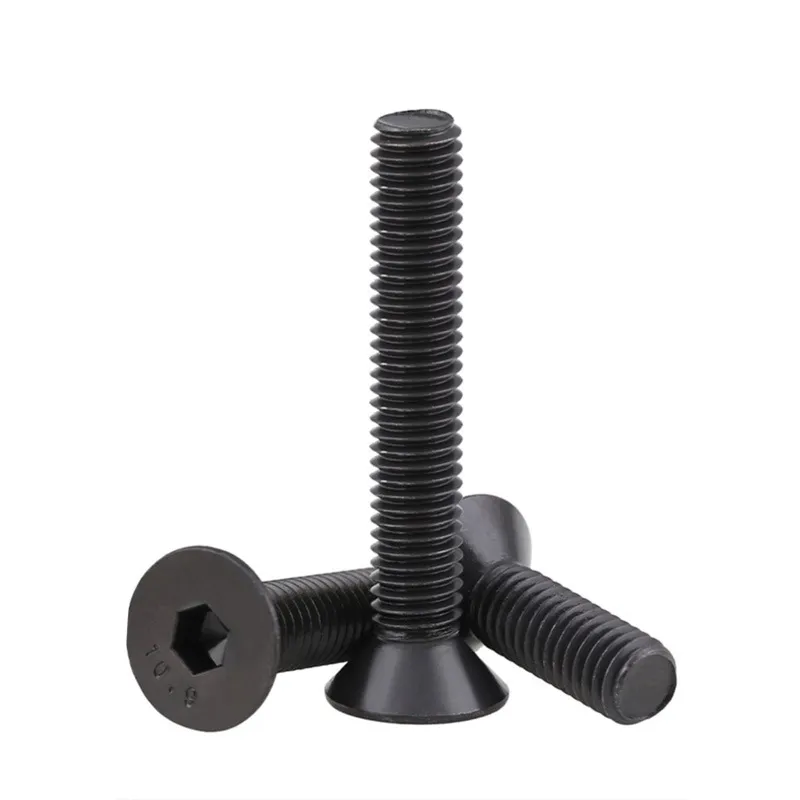

Exploring the Various Types and Applications of Self-Tapping Screws in Different Industries
8월 . 10, 2024 22:40 Back to list
Exploring the Various Types and Applications of Self-Tapping Screws in Different Industries
Understanding Self-Tapping Screw Types
Self-tapping screws are essential fasteners in various applications, known for their ability to create their own thread as they are driven into material without pre-drilling. This feature makes them a favorite in construction, automotive, and furniture industries, among others. With a wide range of self-tapping screw types available, it's important to understand their unique characteristics and suitable applications.
1. Types of Self-Tapping Screws
Self-tapping screws can generally be categorized into two main types thread-forming screws and thread-cutting screws
.Thread-Forming Screws work by displacing material rather than removing it. They are designed with a tapered point that facilitates easier entry into the material. As these screws drive into the substrate, they compress the surrounding material, creating a tight fit. This type is commonly used in plastics and softer materials like wood, as they provide excellent holding power without the need for additional thread removal.
Thread-Cutting Screws, on the other hand, have sharp cutting edges and are designed to remove material as they are driven into a surface. This type is more suitable for harder materials, such as metal, and often features a pilot point to start the cutting process. The design allows for the creation of precise threads in rigid substrates, making them ideal for heavy-duty applications.
2. Head Types and Material Choices
self tapping screw types

Self-tapping screws come in various head styles, including flat, pan, and hex heads, each serving different functional and aesthetic purposes. Flat head screws are countersunk, allowing them to sit flush with the surface, which is essential for applications requiring a smooth finish. Pan head screws offer a rounded appearance and are easier to drive, making them a common choice for general-purpose applications. Hex head screws provide excellent torque application, making them perfect for use with wrenches and sockets, particularly in more robust assemblies.
Material selection is also important when it comes to self-tapping screws. Common materials include steel, stainless steel, and brass. Stainless steel screws are favored for their corrosion resistance, making them suitable for outdoor or marine applications. In contrast, brass screws are often used for aesthetic purposes in crafts and home décor due to their pleasing appearance and resistance to tarnishing.
3. Applications of Self-Tapping Screws
The versatility of self-tapping screws allows them to be used in a wide variety of sectors. In construction, these screws are popular for attaching drywall to metal studs or fastening metal plates. In the automotive industry, self-tapping screws are utilized for various assembly tasks, including securing body panels and attaching components.
Self-tapping screws are also prevalent in home improvement projects. They are invaluable when assembling furniture, especially those that require a strong yet simple fastening solution. DIY enthusiasts appreciate their ease of use, as they eliminate the need for pre-drilling holes, significantly speeding up the assembly process.
4. Conclusion
In summary, self-tapping screws are an indispensable part of many construction and manufacturing processes due to their efficiency and versatility. Understanding the different types, head styles, and material options can help in selecting the right screws for any project. Whether you are a professional contractor, a DIY enthusiast, or simply tackling household repairs, using the appropriate self-tapping screw can make all the difference in achieving a strong and durable result.
Latest news
-
Premium Fasteners Manufacturer | AI-Driven Solutions
NewsAug.01,2025
-
Hot Dip Galvanized Bolts - Hebei Longze | High Strength, Corrosion Resistance
NewsAug.01,2025
-
High-Strength Hot Dip Galvanized Bolts - LongZe | Corrosion Resistance, Custom Sizes
NewsAug.01,2025
-
Best Self Tapping Screws for Drywall - Fast & Secure Installation
NewsJul.31,2025
-
High-Strength Hot Dip Galvanized Bolts-Hebei Longze|Corrosion Resistance&Customization
NewsJul.31,2025
-
Hot Dip Galvanized Bolts-Hebei Longze Metal Products|Corrosion Resistance&High Strength
NewsJul.31,2025

